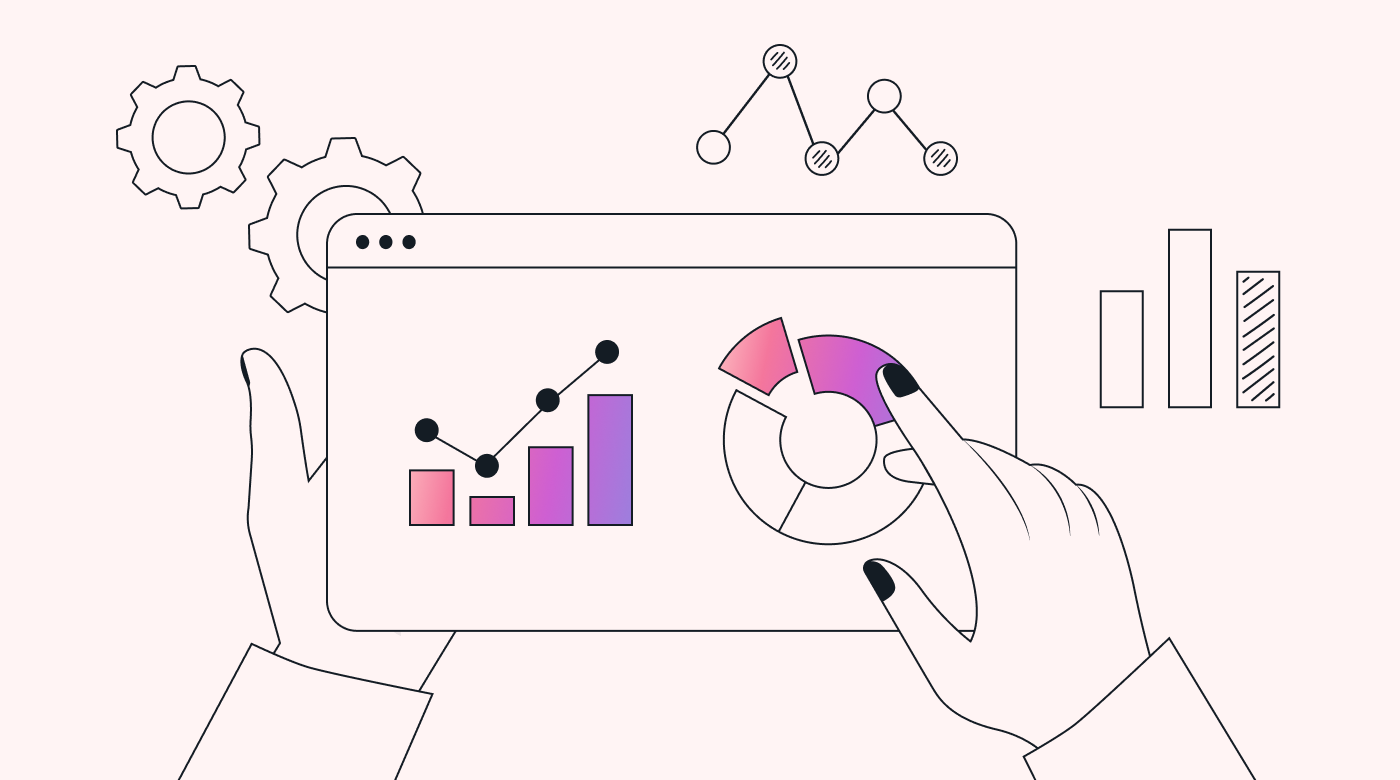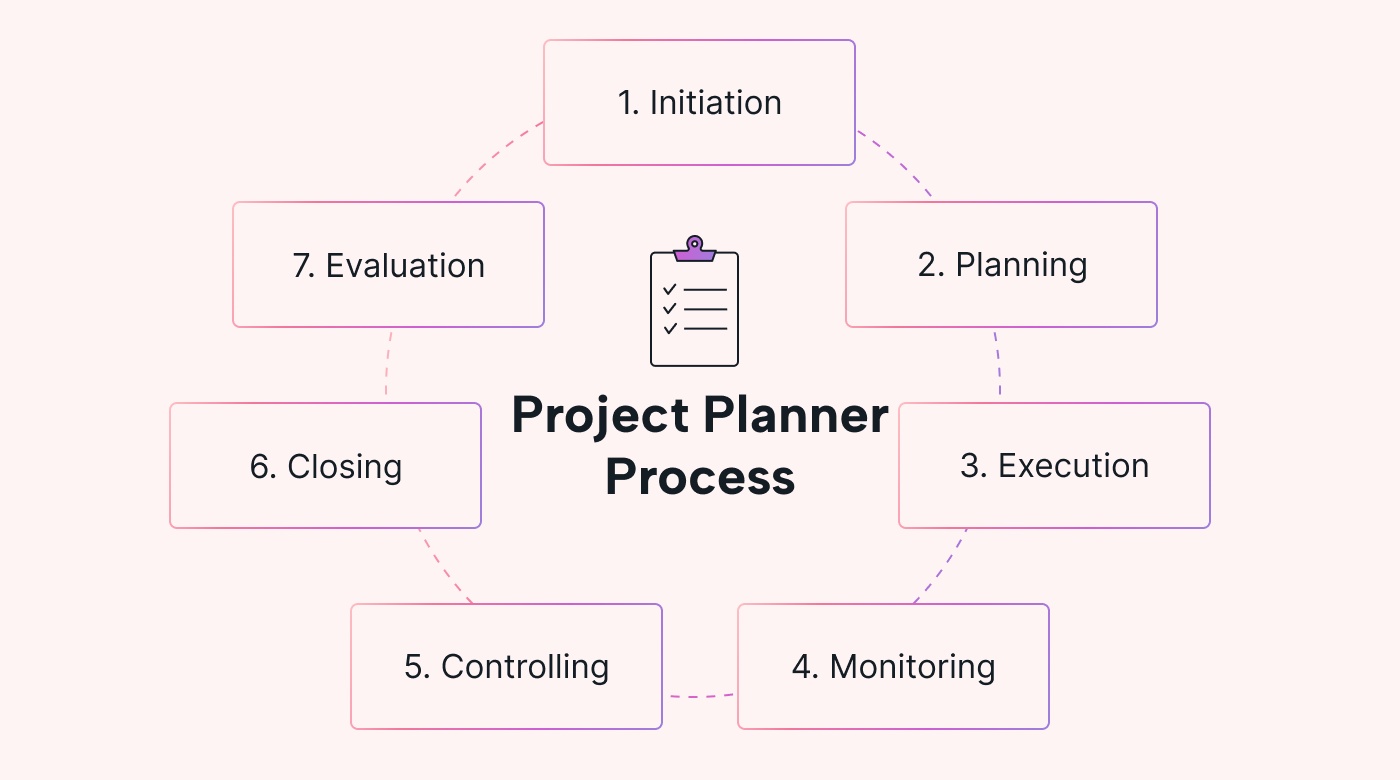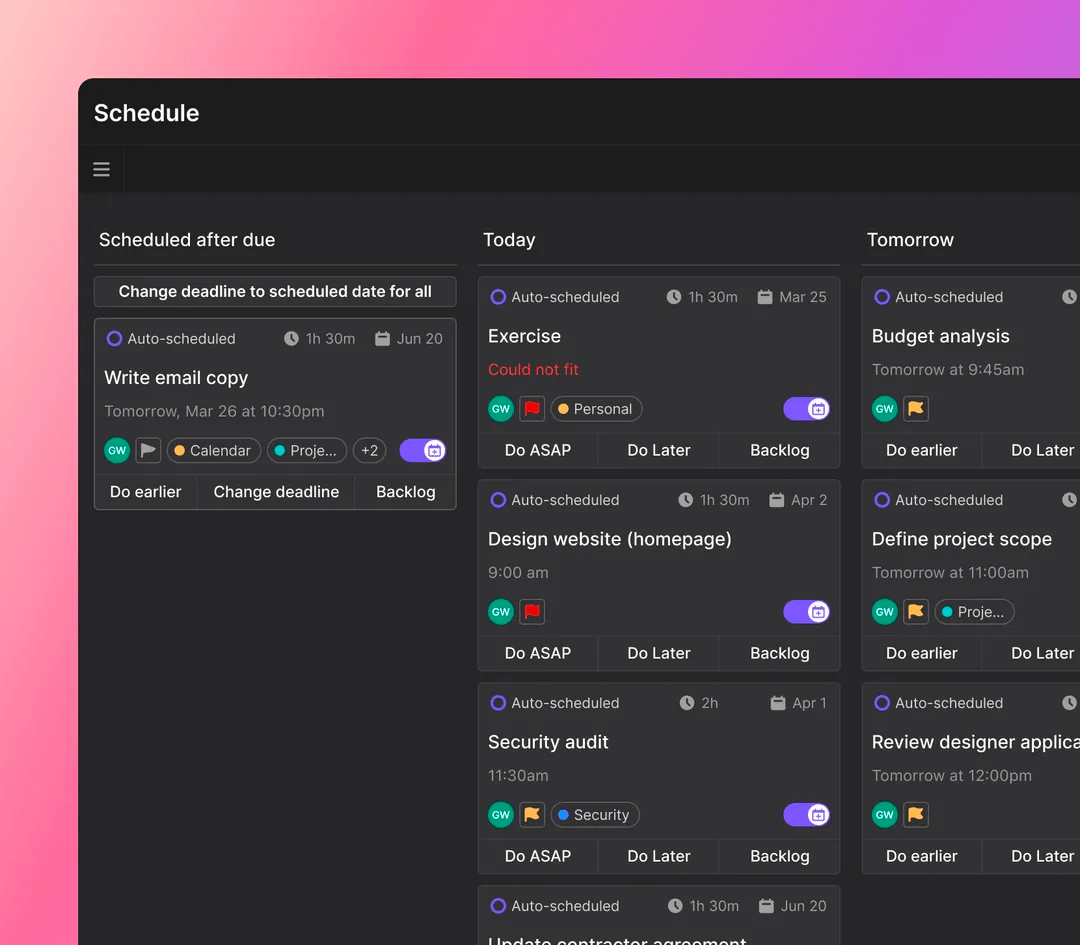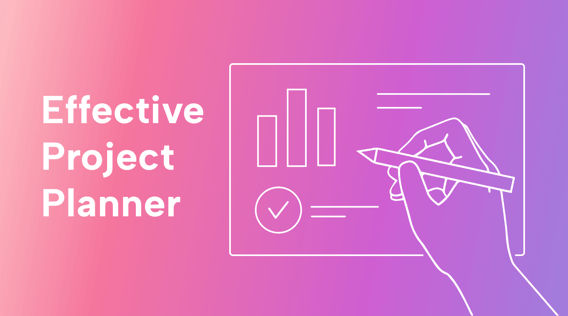In a world where time is money and efficiency is everything, a project planner isn't a luxury — it's a necessity.
But what exactly is a project planner?
This tool can significantly streamline your business processes, enhancing productivity and efficiency.
If you want to manage tasks, improve collaboration among project teams, and ultimately boost your bottom line, this article will show you how.
A project planner can be an invaluable resource for your small business. It's time to transform how you operate and achieve your business objectives.
What is a project planner?
A project planner is a dynamic tool that brings efficiency and structure to your projects, which is especially crucial if you're a small business owner managing multiple projects.
Here are a few ways project planners can play a crucial role:
- Blueprint tasks over time.
- Delegate responsibilities.
- Establish realistic deadlines.
- Track progress in real-time.
Using a project planner is a surefire way to maintain a smooth operation while boosting your bottom line.
What makes a good project planner?
A good project planner is more than just another tool. It's the key to enhancing workplace and team collaboration.
 |
Let's explore some practical ways it can revolutionize your small business operations:
Task management
A helpful project planner removes the confusion and clutter of your project workflows.
For example, instead of trying to keep track of emails, spreadsheets, and sticky notes, it centralizes all tasks, assignments, and deadlines in one place.
Clarifying roles and responsibilities defeats last-minute panic and keeps your projects running smoothly.
Team collaboration
Effective collaboration thrives on clear communication. A project planner acts like a virtual noticeboard, updating everyone on task assignments and project status.
For instance, if your bakery is working on a big wedding order, the project planner could help the cake decorators, bakers, and delivery drivers coordinate their tasks and timing.
This level of transparency fosters better teamwork and tends to end with better results.
Real-time progress tracking
A good project planner provides a real-time view of project progress. It's like having a dashboard for your business operations.
Suppose you're a graphic design agency with multiple projects. Your project planner could highlight a delay in the initial design phase, allowing you to redirect resources or adjust timelines before it impacts the final delivery.
Quickly spotting and resolving problems ensures your projects stay on course and enhances client satisfaction.
Essential criteria for choosing a project planner
Choosing a project planner that fits your business can substantially enhance your team's efficiency and productivity. Consider these key factors when making your choice:
Smooth integration with existing systems
Your project planner should complement and streamline your existing tech setup. Look for a planner that fits neatly into your current technology stack. Here's what to focus on:
- Compatibility: ensure the planner works well with your existing tech stack. It should act like a new team member, fitting into your team's dynamics smoothly.
- Seamless syncing: your planner should sync effortlessly with your Google Calendar, Google Drive, or Microsoft apps. It should factor in deadlines, working hours, task interdependencies, and scheduled meetings to optimize your day.
- Enhancement: the right project planner enhances your systems by streamlining processes, integrating existing tools, providing insightful visualizations, fostering collaboration, offering customization options, and managing resources efficiently.
User-friendliness and support
Your team's productivity depends heavily on the ease of using the project planner. Keep these in mind:
- Intuitive interface: opt for a planner with a straightforward interface that your team can navigate easily.
- Responsive support: choose a planner backed by fast, reliable customer support that can quickly resolve any issues or queries.
Scalability and flexibility
As your business grows, your project planner should adapt to accommodate increasing needs. Here's what to consider:
- Growth potential: look for a planner to handle more significant and complex projects as your business expands.
- Flexibility: ensure your tool is adaptable and evolving with your business needs.
Choosing a project planner is a strategic decision that can make a big difference in your operations (and productivity). Choose wisely.
The 7 steps of project planning
Your project planner isn't just a tool — it's a critical asset that organizes your workflows and drives efficiency in your operations.
 |
To make the most out of your project planner, here are seven steps to better project planning:
- Initiation: set clear, measurable goals for each project. These objectives give your team direction and purpose, keeping your projects on track and focused on the intended outcomes.
- Planning: regularly update your project planner to maintain its relevance. Break your project into manageable tasks and delegate them based on your team member's strengths and current workloads. Correcting the planner with these changes maximizes efficiency and productivity.
- Execution: Bring your plan to life. Schedule tasks and track progress to ensure everyone stays on track.
- Monitoring: regularly review your project planner during this step. Keep an eye on the project's progress and ensure everything moves according to plan.
- Controlling: if you spot a deviation from the plan, use your project planner to steer the project back on its intended path.
- Closing: once you achieve your project goals, wrap things up neatly and ensure on-time completion of every task. Update your project planner to reflect the successful completion of the project.
- Evaluation: reflect on your project. Celebrate the victories and note areas that need improvement for future projects.
Remember, your project planner isn't just a tool — it's the driving force behind an efficient routine. Following these project planning steps helps you maximize your project planner's potential.
Choosing the right project planner for your small business
Project planners come in many shapes and sizes, each with distinct advantages and intended uses. Look for these basic features when choosing your project planner:
Gantt charts
A Gantt chart is a bar chart that maps out tasks over time, providing a visual timeline for your project. Gannt chart templates are a reporting feature excellent for planning, scheduling, and tracking your project's journey.
Project timeline templates
If you need a broader overview of your project, these templates are for you. They help map out your project's key events and activities, providing a high-level view of your project's journey.
Kanban boards
Kanban boards are a solid choice to represent the flow of work in real-time. They visualize outcomes, limit work-in-progress, and help maximize efficiency – perfect for Agile teams.
Project schedule templates
These are more detailed versions of project timelines. They allow you to track individual tasks, assign responsibilities, and set deadlines.
Resource allocation and management tools
Resources, like people and materials, are indispensable in any project. Tools such as Motion can help you effectively track and manage these resources by automating them. Motion automates 90% of project planning.
The benefits of using a project planner
Using a project planner comes with substantial benefits for your business:
Increased productivity
A project planner organizes tasks and matches them to your team's skills. Project management tools are essential for this process, focusing on task dependencies. Doing this removes confusion and wasted time, thereby boosting productivity.
Efficient resource management
A project planner manages your project resources effectively. It uncovers areas where resources are overused or underused, providing insights to make informed decisions about reallocation. This leads to optimal resource utilization, saving both time and money for your business.
Streamlined operations
A project planner helps coordinate tasks, weeds out bottlenecks, and ensures your operation runs seamlessly, resulting in the timely completion of your projects.
Improved client satisfaction
Project planners can increase client satisfaction by helping you make sure that your projects are on time and within budget. These tools enable real-time tracking of work (and milestones), providing clients with transparent, consistent updates.
Enhanced communication
The planner acts as a communication hub, fostering transparency and mutual understanding among the team, which leads to better collaboration.
 |
By incorporating a project planner into your operations, you streamline your processes and foster better team performance.
Embrace your project plan
Use your project planning software to create a detailed roadmap, including every phase, resource, and timeline. Remember to revisit and update this plan as the project progresses, adapting it to evolving circumstances.
Flexibility over perfection
Don't lose sleep over an initial flawless plan. Flexibility is the real game-changer. Make the most of your planning software's review and revision features. As your project evolves, so should your strategy, keeping it relevant and current.
Build in Buffers
Delays happen, but they shouldn't derail your entire project. Use your planning software to integrate buffer times between tasks when setting timelines. It's like having insurance for your project's schedule, keeping you on track despite the unexpected.
Inclusive Planning
Make project planning a team sport. Harness the collaborative features of your software to involve everyone. Your team's insights can transform your plan from good to great. Consider exploring software integrations to enhance project planning.
Stay Proactive
Anticipate challenges before they hit. Use your project planning software's predictive capabilities to stay ahead of potential issues. Regular check-ins on project progress and risk indicators can be your secret weapon for smooth project execution.
This approach to project planning promises to elevate your efficiency.
Amplify your business potential with a project planner
It's time to put words into action. The success of your small business depends on how efficiently you manage your projects.
A project planner isn't just a tool — it's your gateway to a more organized, productive, and profitable business operation.
The secret to getting ahead is getting started. There's no better time to boost your team's productivity with a project planner.
Why not give Motion a try? It organizes each team member's schedule to ensure optimal efficiency and practical task completion. Start your 7-day free trial to experience the difference a project planner can make for your business.





